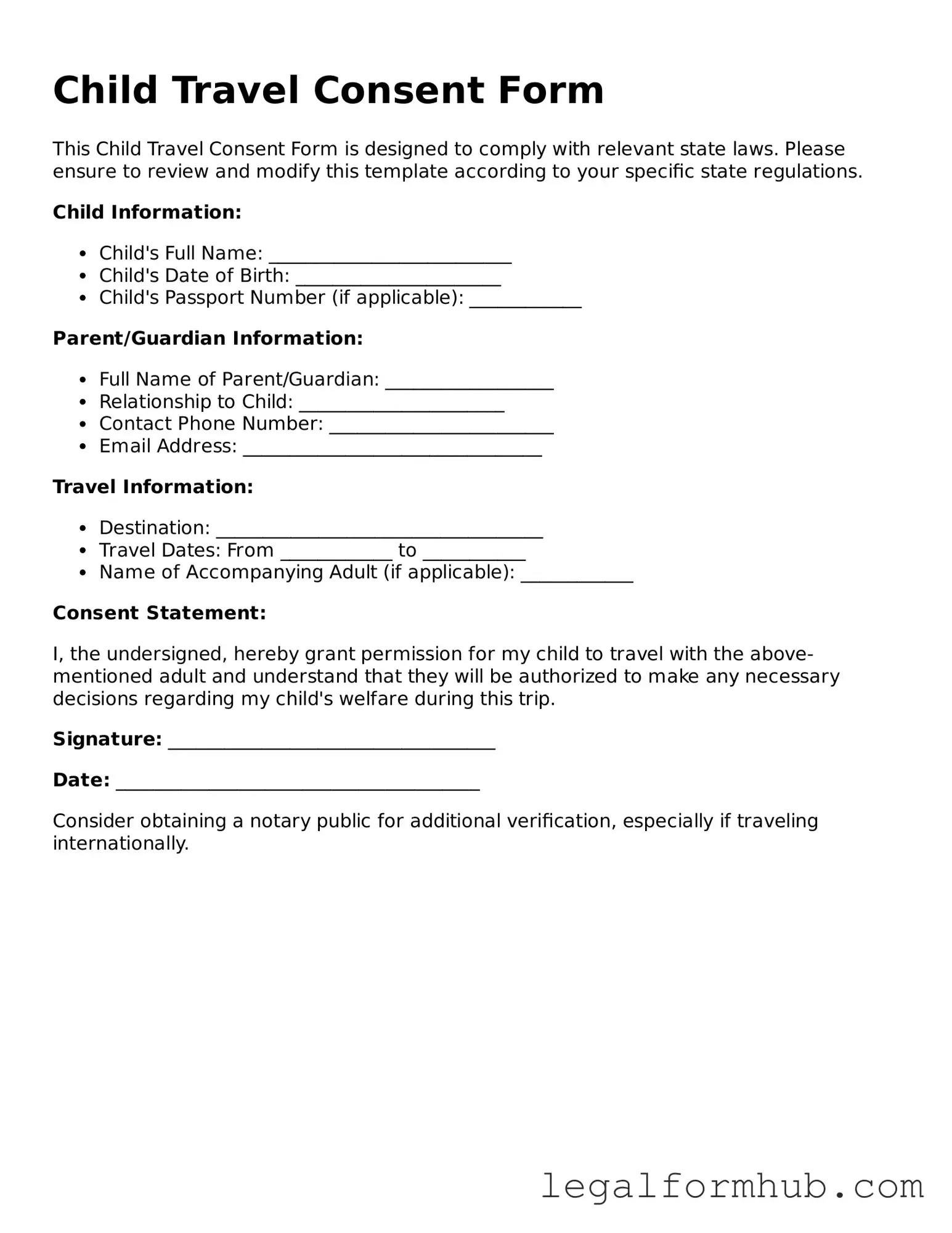The first document similar to the Child Travel Consent Form is the Medical Consent Form. This form grants permission for a caregiver or medical professional to make health care decisions for a child in the absence of a parent. Like the travel consent form, it requires signatures from the legal guardians and specifies the scope of authority granted. Both forms serve to protect the child's well-being while ensuring that caregivers can act in the child's best interest during critical situations.
Another related document is the Temporary Guardianship Agreement. This agreement allows a parent to designate another adult as a temporary guardian for their child. Similar to the Child Travel Consent Form, it outlines the specific rights and responsibilities of the guardian. This document is particularly useful in cases where parents may be traveling or otherwise unavailable, ensuring that someone is legally empowered to care for the child and make decisions on their behalf.
The Power of Attorney for Minor Children is also akin to the Child Travel Consent Form. This legal document allows parents to grant another individual the authority to make decisions for their child. The power of attorney can cover a wide range of decisions, including travel, education, and medical care. Both documents require clear communication of the parent's wishes and serve to facilitate the child's care when parents are not present.
Additionally, the Child Custody Agreement shares similarities with the Child Travel Consent Form. This document outlines the terms of custody and visitation between parents. While it primarily addresses living arrangements and parental rights, it often includes provisions regarding travel. Both documents are essential for establishing clear guidelines and ensuring that the child's best interests are prioritized during parental absences.
Lastly, the School Authorization Form is relevant in this context. This form allows parents to grant permission for their child to participate in school-related activities, including field trips or extracurricular events. Like the Child Travel Consent Form, it requires parental consent and specifies the activities for which permission is granted. Both documents aim to ensure that children are safe and that caregivers have the authority to act in the child's best interests while they are away from their parents.
